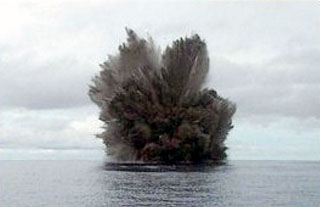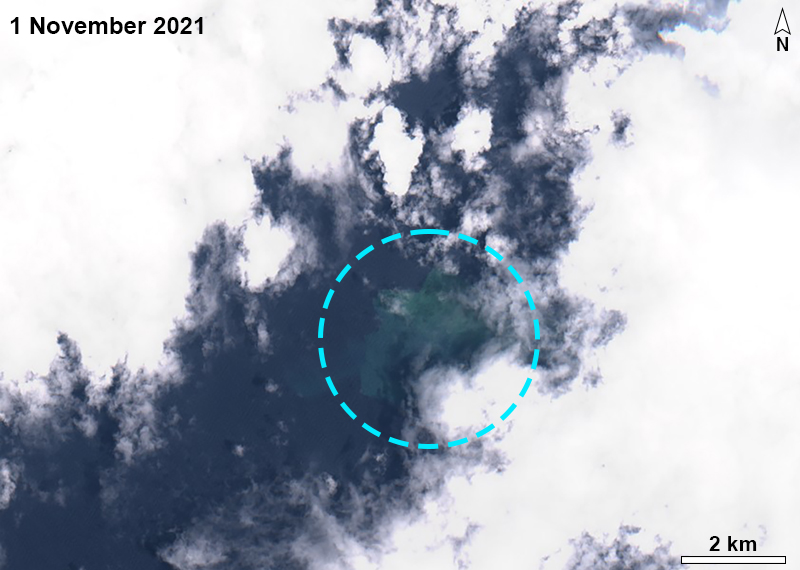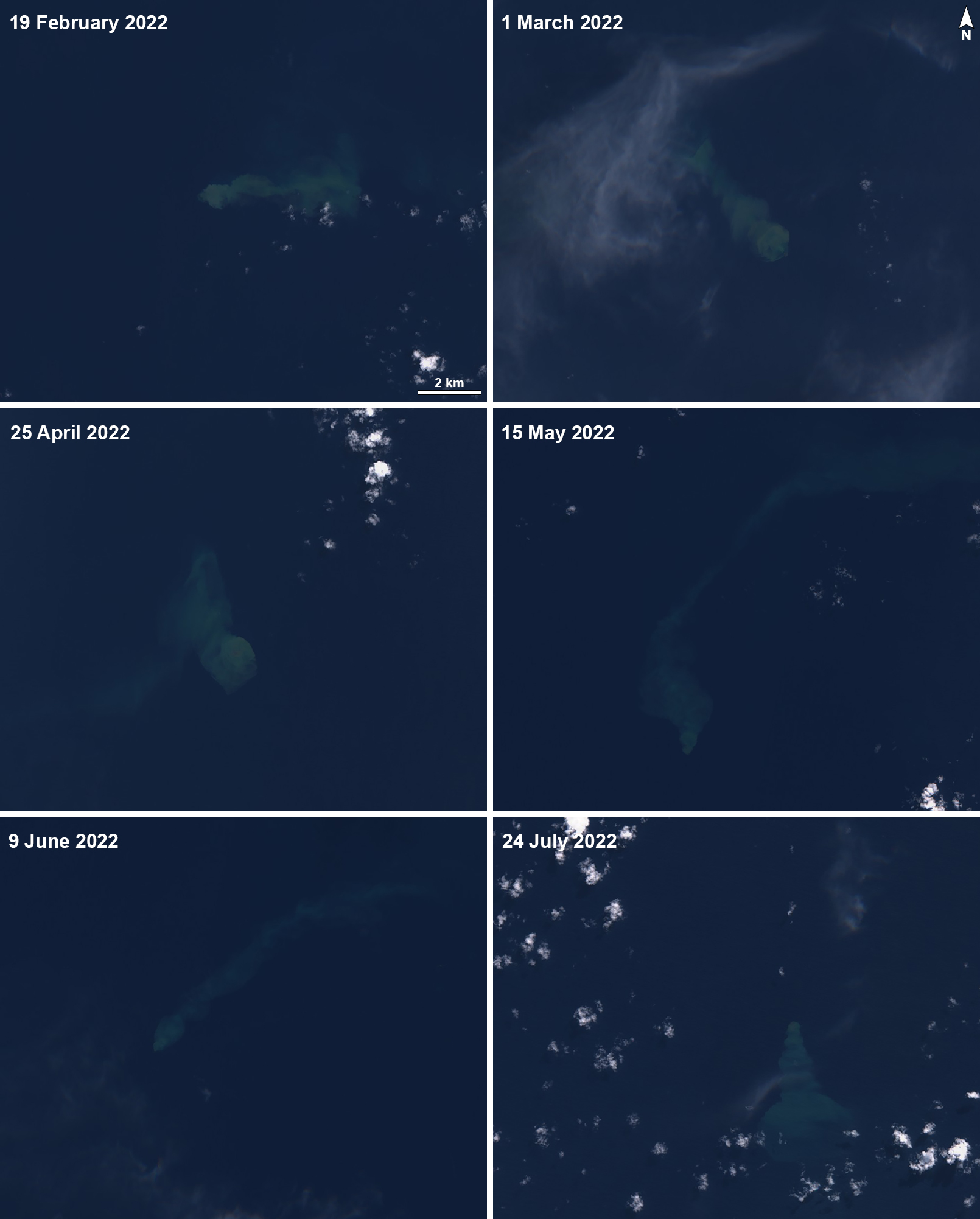Report on Kavachi (Solomon Islands) — August 2022
Bulletin of the Global Volcanism Network, vol. 47, no. 8 (August 2022)
Managing Editor: Edward Venzke.
Edited by Kadie L. Bennis.
Kavachi (Solomon Islands) Discolored water plumes intermittently observed in satellite imagery during November 2021-July 2022
Please cite this report as:
Global Volcanism Program, 2022. Report on Kavachi (Solomon Islands) (Bennis, K.L., and Venzke, E., eds.). Bulletin of the Global Volcanism Network, 47:8. Smithsonian Institution.
Kavachi
Solomon Islands
8.991°S, 157.979°E; summit elev. -20 m
All times are local (unless otherwise noted)
Kavachi is an active submarine volcano in the SW Pacific, located in the Solomon Islands south of Gatokae and Vangunu islands. Its first recorded eruption occurred during 1939, and since then it has produced many ephemeral islands up to 1 km long where occasionally lava flows were observed. Volcanism has been characterized by phreatomagmatic explosions that ejected steam, ash, and incandescent bombs. The previous report described intermittent discolored plumes extending from a single point during October 2021 (BGVN 46:11). This report covers similar activity of discolored water during November 2021 through July 2022 based on satellite images.
Observations using Sentinel-2 natural color satellite imagery have shown occasional discolored (light yellow-green) submarine plumes originating from a single point during each month of the reporting period. On 1 November 2021 a light yellow-green plume was partially visible beneath cloud cover, which seemed to disperse to the W (figure 26). Plumes were visible in satellite images during 4, 14, and 19 (figure 27) February, which dispersed to the E, S, and E, respectively. On 1 March a strongly colored plume appeared brown above the source vent and extended NW (figure 27). Another one on 6 March extended SW and was lighter in color. Slightly discolored plumes were visible on 11, 16, and 21 March. A large plume visible on 20 April drifted slightly to the SW, though it remained relatively close to its point of origin. Another plume on 25 April extended from its point of origin toward the NW (figure 27). The head of the blue was brownish in color. Small to moderate discolored plumes were detected on 5, 15 (figure 27), 20, and 30 May. On 9 June a narrow plume and extended to the NE (figure 27), followed by weaker plumes on 19 and 29 June. On 4 July the plume was fan shaped, dispersing to the SE and E on 9 July. Other discolored plumes were visible on 14, 19, 24, and 29 July; on 24 July the plume was relatively strong, extended S, and was brown above the source vent (figure 27).
Geological Summary. Named for a sea-god of the Gatokae and Vangunu peoples, Kavachi is located in the Solomon Islands south of Vangunu Island. Sometimes referred to as Rejo te Kvachi ("Kavachi's Oven"), this shallow submarine basaltic-to-andesitic volcano has produced ephemeral islands up to 1 km long many times since its first recorded eruption during 1939. Residents of the nearby islands of Vanguna and Nggatokae (Gatokae) reported "fire on the water" prior to 1939, a possible reference to earlier eruptions. The roughly conical edifice rises from water depths of 1.1-1.2 km on the north and greater depths to the SE. Frequent shallow submarine and occasional subaerial eruptions produce phreatomagmatic explosions that eject steam, ash, and incandescent bombs. On a number of occasions lava flows were observed on the ephemeral islands.
Information Contacts: Sentinel Hub Playground (URL: https://www.sentinel-hub.com/explore/sentinel-playground).



